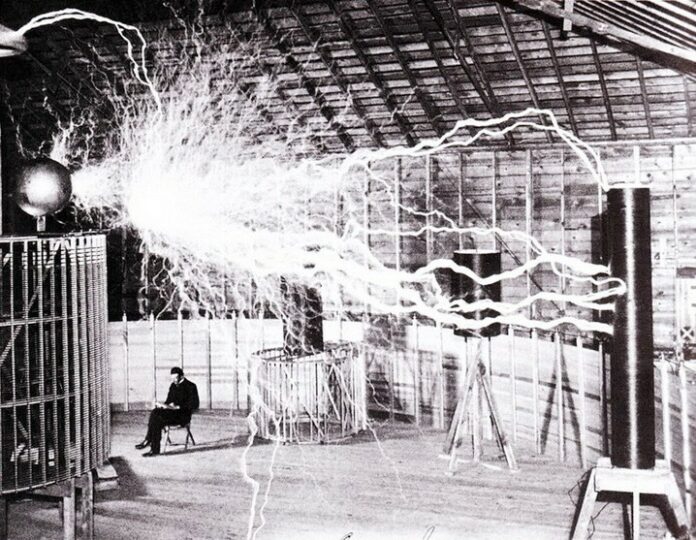S>olar-power adopters are at the cutting edge of climate-change activism on the home front. Here in Sonoma County, they’re gaining in numbers, and now homeowners have a new (if costly) opportunity to maximize their clean-energy investment, with the Tesla Powerwall battery.
The Palo Alto–based electric-vehicle giant unveiled the Powerpack for commercial use and the Powerwall for residential consumers earlier this year, and the pre-orders immediately flowed in. The batteries store excess energy generated from rooftop solar; the power they store, Tesla claims, can be used to keep the lights on during a power outage and to regulate energy that flows back into the grid.
The residential version of the Powerwall has dominated renewable-energy news, especially in electric-vehicle circles (EVs are even cleaner—and more economical—when powered with your own solar energy). The hip prestige of the Tesla name, the sleek design and hint of independence from the grid all work together to make the Powerwall look sexy and utilitarian. It all sounds great, but is it what you need in a battery?
Not necessarily, says Joseph Marino, who owns the solar-battery business DC Power Systems in Healdsburg. Reliability is the more important issue when it comes to batteries, says Marino, who adds that the standard “forklift”-type batteries that dominate the market still fit the bill. Those batteries are also 100 percent recyclable, whereas lithium-battery recycling is still in its infancy; the Powerwall uses lithium batteries. Yet some kind of battery is the only solution for storage until there’s a greener way found to conserve excess energy generated by solar panels and get it to market.
Sonoma County gets greener by the day, and, indeed, the county was one of 16 communities recognized last December by the White House for its climate-protection leadership. That’s in no small measure due to the creation of Sonoma Clean Power, a big step for the county as it heads in the direction of a power marketplace dominated by clean energy, some of it locally sourced. The utility puts an emphasis on solar power as part of an evolving energy mix that also includes geothermal power produced locally.
The problem, says Sonoma Clean Power CEO Geof Syphers, is that “solar and wind do not make energy around the clock. These new technologies offer part of the answer. Battery storage combined with interruptible electric-vehicle charging will be necessary as we scale up our use of renewables.”
Sebastopol resident Alan Soule agrees. He has a rooftop solar system and owns two Tesla electric vehicles. “It just makes sense to put in solar when you have an electric vehicle, so you can make your own fuel,” says Soule. He pre-ordered a 10 kilowatt-hour (kWh) Powerwall when Tesla announced the new product. “It’s worth it to be able to use energy if the grid goes down.”
The Powerwall takes up less space and looks sexier than standard batteries, but it also costs four times as much as most batteries now in use. The Tesla
7 kWh Powerwall runs $3,000; the 10 kWh version is $3,500. That does not include the installation or cost of the hybrid inverter needed to use the battery on a grid-tied solar-energy system. (Most solar users are tied in to the PG&E grid.)
Whether the battery will justify its cost for the occasional outage is another matter. During a June shareholders meeting, Tesla CEO Elon Musk admitted that the emergency-storage benefit for grid-tied solar customers would only appeal to a small number of residents. For the most part, it’s cheaper (if less eco-conscious) to use a gas generator for infrequent outages.
But can the Powerwall help off-grid solar-power users “save for a rainy day”? That depends. In order to be independent of the grid without experiencing power interruptions, a household must overproduce energy and store it for nighttime use and overcast days.
That could be problematic, depending on the size of a resident’s solar-power system and the duration of a stretch of gray days, when not much energy is being created or stored. There’s no point in having battery capacity to store energy if you can’t produce the energy in the first place.
Soule, in the meantime, has his eye on so-called micro-grids, which is as a way for Sonoma County solar-power users to leverage solar-wrought savings across the community. Micro-grids are small co-ops in which residential solar-power users in a neighborhood feed excess power to a central switch, which the residents control.
Micro-grids may or may not be coming to a progressive community near you. In the meantime, solar-powered citizens don’t necessarily have to run out and buy a Tesla Powerwall. It has the Tesla name and it looks cool, but many in the renewable-energy industry are saying that, while Musk is a great marketer and packager, he didn’t necessarily build a better mousetrap with this product.
Tesla did not return several calls for comment.











